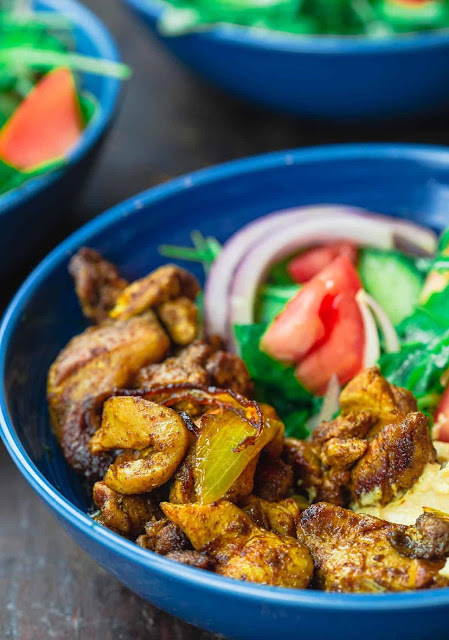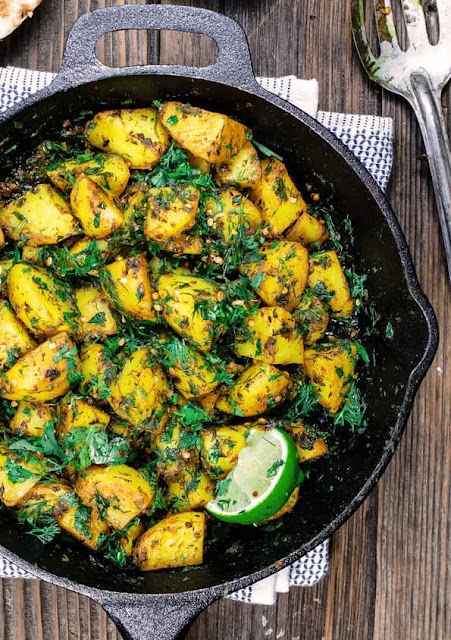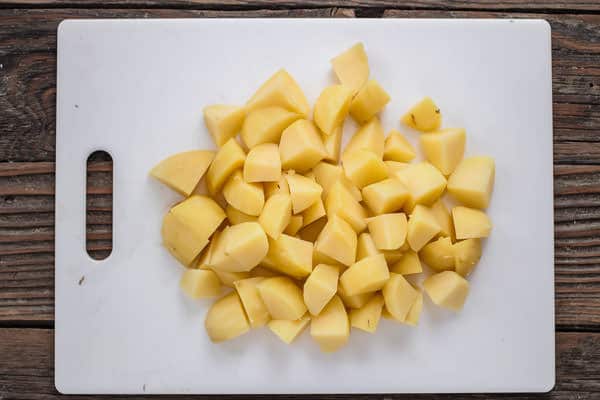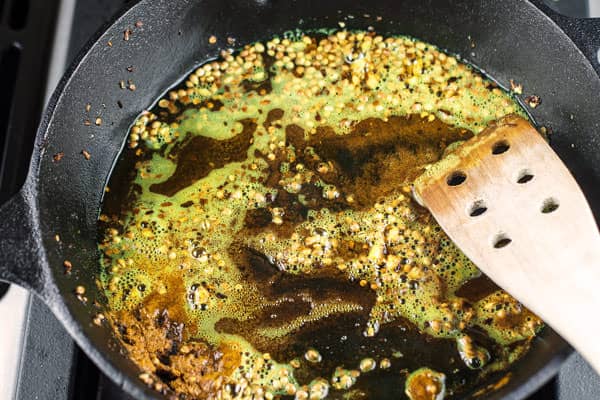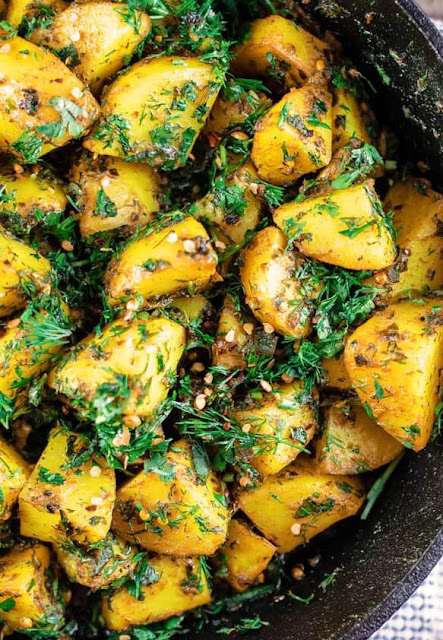- 1 ½ teaspoon coriander
- 1 teaspoon cumin
- ½ teaspoon red pepper flakes
- ¾ teaspoon turmeric
- 1/2 teaspoon paprika
- 1 ½ pounds moderately firm fish fillet, I used a combination of sea bass and red snapper, cut into chunks (1 ½ -inch pieces)
- Salt and black pepper
- Extra virgin olive oil
- 1 red onion, chopped
- 1 red bell pepper, chopped
- 2 celery ribs, chopped
- 4 garlic cloves minced
- 1 28- ounce can whole tomatoes
- 4 cups vegetable stock or fish stock
- 1 cup packed chopped fresh parsley
- 1 cup packed chopped fresh cilantro
- 3 green onions chopped (both white and green parts)
- 1 lemon juice of
INSTRUCTIONS
1. In a small bowl, mix the spices together.
Season the fish with a good pinch of kosher salt and black pepper and 2 to 3 teaspoons of the spice mixture; toss to coat.

2. In a large pot or Dutch oven, heat 3 tablespoons extra virgin olive oil over medium-high heat. Add the onions, bell peppers, celery, and garlic. Cook, tossing regularly, for 5 minutes or until the vegetables soften. Season with a good pinch of kosher salt and black pepper. Add the remainder of the spice mixture.

3. Add the tomatoes and fish broth. Bring to a boil, then lower the heat to medium-low. Cover the pot part-way and let simmer for 20 minutes.
Add the fish and cook for about 4 to 5 minutes or until the fish is cooked through (do not over-cook the fish, remember it will continue to cook in the hot broth even after you remove it from the heat).

4. Stir in the parsley, cilantro, green onions. Finish with lemon juice. Serve immediate

Season the fish with a good pinch of kosher salt and black pepper and 2 to 3 teaspoons of the spice mixture; toss to coat.

2. In a large pot or Dutch oven, heat 3 tablespoons extra virgin olive oil over medium-high heat. Add the onions, bell peppers, celery, and garlic. Cook, tossing regularly, for 5 minutes or until the vegetables soften. Season with a good pinch of kosher salt and black pepper. Add the remainder of the spice mixture.

3. Add the tomatoes and fish broth. Bring to a boil, then lower the heat to medium-low. Cover the pot part-way and let simmer for 20 minutes.
Add the fish and cook for about 4 to 5 minutes or until the fish is cooked through (do not over-cook the fish, remember it will continue to cook in the hot broth even after you remove it from the heat).

4. Stir in the parsley, cilantro, green onions. Finish with lemon juice. Serve immediate







